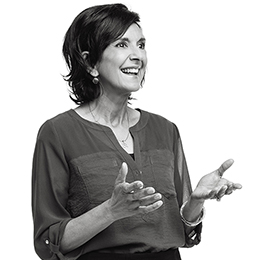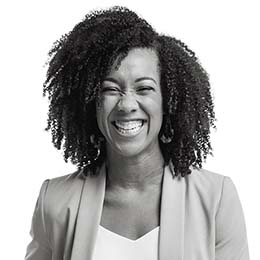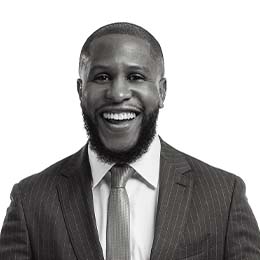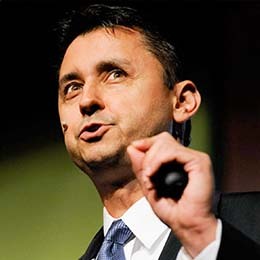Navigating Organizational Change in Disruptive Times

- What Is Organizational Change?
- Disruption as the Fuel for Organizational Change
- Recognizing Growth Inside Disruption
- Breaking Free from Assumptions During Disruption
- The New Role of the Leader in Organizational Change
- 3 Steps to Equip Leaders to Thrive in the Toughest Moments
- How Leaders Can Drive Organizational Change
- How to Build Leaders Who Lead Change
- Sustain Change Through Leadership, Not Compliance
- Leadership Is the Strategy for Lasting Organizational Change
Key Takeaways:
- Organizational change succeeds when leaders bring clarity to disruption, turning uncertainty into forward momentum through decisive, people-first leadership.
- The most effective leaders navigate disruption by challenging assumptions, experimenting with purpose, and building trust.
The most effective organizational change doesn’t start with a process; it starts with leadership.
Change is inevitable, but thriving through disruption is a leadership discipline. The leaders who succeed bring clarity to chaos and turn uncertainty into growth. They don’t avoid disruption. Instead, they lead people through it with purpose and conviction. By discerning challenges clearly, acting decisively, and keeping people at the center of their decision-making, these leaders transform disruption into momentum. This is how organizational change moves from theory to transformation—and how leadership becomes the ultimate competitive advantage.
What Is Organizational Change?
At its core, organizational change is the intentional shift in a company’s systems, strategies, structures, or behaviors to meet new demands. It is not accidental drift or ad hoc tweaks—it is purposeful transformation, designed to align the organization with new realities. True organizational change redefines how people collaborate, how leaders make decisions, and how the organization creates value in a changing environment.
Every organization, regardless of size or industry, faces moments that demand change. These moments often begin as pressures, either internal or external. But in the hands of effective leaders, they become catalysts for renewal and growth. These pressures can include:
- Market shifts — Markets evolve faster than plans. Customer expectations rise, industries shift, and new competitors rewrite the rules. When markets fluctuate, the organizations that thrive are those whose leaders translate uncertainty into clarity by pivoting strategy while maintaining focus on mission and values.
- New technology — Advances in automation, data analytics, and AI are redefining how work gets done. But technology alone doesn’t drive transformation; leadership does. Leaders must connect new tools to a clear purpose, ensuring that technology adoption drives performance and engagement rather than confusion or burnout.
- Crises, competition, or strategic resets — Some change arrives without warning: economic shifts, regulatory changes, or crises that challenge long-held assumptions. Others are intentional: strategic resets that require the courage to rethink what’s possible. In both cases, success depends on leaders who can discern meaning amid disruption and guide people forward with confidence.
Such inflection points are leadership moments, not just operational ones. Leaders must step up to direct organizational change, not defer it to process or to mere change management.
In every successful transformation, leadership is the strategy. In these moments, people look to leaders for clarity, direction, and belief. They need to know not only what is changing, but why it matters and how it will move the organization closer to its purpose.
Discover what’s driving disruption and how to help your teams navigate it when you download our guide, The Energy of Change: 5 Leadership Behaviors to Drive Collective Action in a Fluid Landscape.
Disruption as the Fuel for Organizational Change
Disruption has become one of the defining realities of modern leadership. Markets shift overnight, technology advances faster than strategies can adjust, and unexpected crises can alter entire industries within months (or even weeks). For many, disruption feels like chaos—a force to be endured or contained. But for the most effective leaders, disruption is fuel. It is the spark that ignites learning, innovation, and sustainable organizational change.
The Disruptive Opportunity
In times of disruption, most organizations instinctively pull back, seeking safety. But great leaders lean in. Disruption reveals what is outdated, misaligned, or no longer effective. What was invisible under the status quo, or the daily “whirlwind,” becomes glaringly obvious when the environment shifts. Disruption acts as a mirror, revealing the gap between where the organization is and where it needs to go.
This is the moment to reframe disruption as opportunity. Instead of asking, “How do we survive this?,” forward-thinking leaders ask, “How do we emerge stronger and more capable through organizational change?” The disruption becomes a forcing function—an invitation to reimagine what’s possible.
The leaders who excel at driving organizational change during disruption share three common traits:
- They stay anchored in purpose. Purpose provides clarity when strategy must shift. It gives meaning to the effort and steadiness to the team.
- They focus on people before the process. Systems can be rebuilt; trust cannot. Leaders who prioritize communication and inclusion maintain engagement through uncertainty.
- They create progress quickly. Small wins matter. Quick, visible progress builds belief in the larger vision of organizational change.
When disruption strikes, it’s easy to fixate on risk. Exceptional leaders instead look for possibility—and that mindset transforms turbulence into momentum.
Recognizing Growth Inside Disruption
Disruption does more than expose problems; it reveals potential. It functions as an opportunity to see the organization from a different angle. When leaders look beyond the surface disruptions and examine what’s emerging beneath them, they often discover powerful sources of growth, including:
- New customer needs: Crises often reshape what customers expect. An organization can respond by reinventing offerings or delivery models.
- Inefficient systems: Processes that were tolerable under stable conditions may collapse under stress. Disruption shows where the bottlenecks truly are.
- Untapped internal strengths: Under pressure, teams often innovate in ways they never would under comfort. These emergent capabilities become seeds for organizational change.
- Space for cultural reset: When consistent routines fracture, social norms and unspoken rules become open for revision.
Growth during organizational change requires intentional leadership. Without guidance, disruption can scatter focus and drain energy. But with strong leadership, it becomes the most productive catalyst an organization can ever experience.
Breaking Free from Assumptions During Disruption
Many of the deepest constraints on performance live in unexamined beliefs. At the heart of every transformative organizational change is a moment when leaders challenge the beliefs and assumptions that have quietly shaped decisions, behaviors, and expectations. These assumptions often operate invisibly, guiding action without being questioned. But in times of disruption, assumptions are revealed, and leaders have a choice: defend them or redefine them. Some of the most limiting assumptions sound deceptively practical:
- “That’s how we’ve always done it.”
- “If it’s not broken, don’t fix it.”
- “People won’t go for that.”
- “That person isn’t ready for leadership.”
- “We need a perfect plan before we act.”
Each of these statements can become a barrier to progress. They preserve comfort over innovation. They reinforce what was rather than exploring what could be. Leaders committed to meaningful organizational change learn to notice these assumptions and confront them directly.
Challenging assumptions should not be approached with criticism, but curiosity. Instead, ask: What if this no longer applies? or What if the opposite were true? These questions open space for creative thinking and collective problem-solving. They give teams permission to experiment, learn, and iterate, all essential to thriving amid disruption.
Learn how to embrace change and uncertainty to grow your organization when you download our new guide, From Shock to Strategic Advantage: How Leaders Convert Disruption Into Opportunity.
The New Role of the Leader in Organizational Change
The demands of leadership are evolving as rapidly as the environments that leaders navigate. In the past, leadership was often defined by a Command & Control model that maintained stability, managed performance, and minimized risk. But in moments of disruption, control is an illusion. The new standard for leadership is not stability; it’s adaptability. The ability to lead organizational change through uncertainty is now the defining measure of leadership effectiveness.
From Manager to Disruptor
The modern leader must think and act differently. Traditional management focuses on preserving what works, while effective leadership embraces disruption to discover what’s next.
To lead organizational change successfully, leaders must move from being managers of the known to disruptors of the possible. This doesn’t mean creating chaos for its own sake—it means seeing what others overlook and having the courage to question what’s been accepted for too long.
Disruption, by nature, unsettles systems, assumptions, and comfort zones. Most people instinctively resist it because it challenges familiarity. But the most effective leaders recognize disruption as a powerful source of insight. It reveals which processes, mindsets, or habits no longer serve the organization’s purpose. Rather than seeking to restore the old order, these leaders ask “What is this disruption trying to teach us?”
When leaders embrace this mindset, organizational change becomes not a reaction to crisis but a proactive path toward progress. They create cultures that view uncertainty as a testing ground for innovation and resilience. In doing so, they signal to their teams that transformation is not a threat—it’s a defining opportunity.
The Most Trusted Leadership Company
Learn how your organization can use our people, content, and technology to create collective action and meaningful change.

3 Steps to Equip Leaders to Thrive in the Toughest Moments
When leaders are equipped to lead through disruption, entire cultures shift. Leaders who develop the confidence and tools to guide others through volatility create a ripple effect that extends far beyond a single project or initiative. Teams begin to take ownership of problems. Collaboration deepens. Accountability strengthens. The organization becomes not just responsive to change, but ready for it.
Leaders who embrace disruption can take a three-step approach to guide their teams through uncertainty and seize opportunities for growth:
1. Discern
Discernment is the leader’s first responsibility in times of uncertainty. Before action comes clarity. Leaders must see what others miss. They need to identify not only what’s changing but what that change truly means for the business, its people, and its future. Discernment is a balance of data, intuition, and curiosity. Leaders must ask:
- What’s really changing and what’s simply noise?
- What’s at risk if we don’t act?
- Where is there a hidden opportunity?
This step often requires challenging assumptions and naming the disruption for what it is. Discernment builds trust, because it shows that leadership is doing more than just reacting—they are working to understand. Only when leaders discern clearly can they direct meaningful organizational change.
2. Execute
Leaders cannot afford to become trapped in analysis paralysis. Instead, they must demonstrate agility and translate insight into execution. Execution is where leadership courage is tested. In a world where conditions shift rapidly, waiting for a perfect plan is the fastest path to irrelevance.
Execution during organizational change requires both urgency and humility. Leaders must be willing to act quickly, test ideas, and adjust based on learning. Short, low-risk experiments help the organization stay agile while building confidence. The goal is progress, not perfection.
Execution also involves collaboration. The most effective leaders bring people together across boundaries, inviting input from various teams. When people feel ownership in the process, organizational change accelerates.
3. Refine
Every disruption brings lessons. The most effective leaders pause to reflect, evaluate outcomes, and capture insights before moving forward. Refinement transforms experience into capability.
In this stage, leaders celebrate what worked, acknowledge what didn’t, and prepare for what’s next. The goal is not to return to stability, but to strengthen adaptability. When refinement becomes a habit, organizational change turns from a one-time initiative into a repeatable rhythm.
This process creates the foundation for sustained resilience. It ensures that organizational change is not an occasional response to crisis, but a core competency that defines how the organization learns and grows.
How Leaders Can Drive Organizational Change

We can only graduate to leading people through change if we know how to deal with change as humans first.
Driving organizational change requires more than strategy and structure; it requires emotional intelligence, credibility, and genuine respect for people. Leaders who understand the human dynamics of change can transform resistance into engagement, skepticism into ownership, and fear into forward motion. Below are three essential takeaways that will support leaders and teams navigating organizational change.
Resistance Is a Clue, Not a Problem
Resistance is not the enemy of organizational change. Instead, resistance is a signal. Most people don’t dislike innovation on principle; they resist change when they fear some type of loss—of control, of what’s familiar, or even of their livelihood.
That’s why organizational change can’t come from top-down enforcement. Rather, it requires inviting input from all levels. When leaders interpret resistance as a clue rather than a problem, they unlock insight into how to lead more effectively.
Good leaders listen deeply to the stories behind resistance and seek understanding. They lean into the resistance with curiosity. Instead of saying, “Why aren’t people on board?” they ask, “What does their hesitation tell us?” This shift reframes resistance as feedback, not defiance. It becomes an opportunity to listen deeply, to clarify intent, and to align action with meaning.
When resistance is met with curiosity and respect, it often becomes energy for progress. People shift from feeling excluded to feeling empowered. They begin to see organizational change as something happening with them, not to them.
Improve clarity and help your teams navigate uncertainty with our free leadership tool, How to Communicate Change.
Trust Is the Bridge
Every successful organizational change rests on a single foundation: trust. Without trust, communication falters, collaboration stalls, and progress slows. With trust, organizations move faster, learn quicker, and recover from setbacks more resiliently.
Trust accelerates organizational change because it reduces uncertainty. It allows people to give their leaders the benefit of the doubt, even when outcomes aren’t guaranteed. When people trust leadership intent, they’re more willing to experiment, learn, and take ownership of new ways of working.
Download our guide, 7 Steps to Create an Environment of Trust on Your Teams, to gain leadership insights that fuel trust, innovation, and resilience amid disruption.
Culture Can’t Be Ignored

Developing—or perhaps redeveloping—a healthy, organizational culture in today’s environment requires an investment of patience, trust, and support. But the reward is a workforce that shows up authentically, does their very best work, and is less likely to exit when things get tough.
Many organizations attempt to change results without examining or changing culture and then wonder why outcomes don’t stick. Culture is the ecosystem in which change either thrives or dies. It determines how people respond to uncertainty, how they make decisions, and how they hold one another accountable. It defines what behaviors are rewarded, tolerated, or ignored. When leaders initiate transformation without addressing cultural alignment, even well-designed strategies can collapse under the weight of unspoken norms.
Leaders must therefore treat cultural stewardship as a central leadership responsibility. The goal is to align the culture with the organization’s new direction—ensuring that beliefs, behaviors, and systems all reinforce the intended change.
To build a culture that supports organizational change, leaders should focus on three key levers:
- Model the new mindset. Culture shifts when people see consistent leadership examples. If leaders model adaptability, humility, and courage, those traits cascade throughout the organization.
- Reinforce through systems. Reward mechanisms, feedback loops, and talent development programs should all align with the new priorities. If the organization rewards old behaviors, culture will regress.
- Shape shared language. Common vocabulary creates coherence. When teams use shared terms for success, accountability, and values, they move in unison.
Building a resilient culture requires intention and patience. Culture doesn’t transform through declarations. It evolves through daily, repeated behaviors. Every meeting, decision, and message is an opportunity to reinforce or erode the culture that supports organizational change.
Uncover the crucial elements of organizational cultures that endure during disruption with our free guide, The 4 Pillars of a Thriving Workplace Culture.
How to Build Leaders Who Lead Change
While your people are the ones who make change happen, it’s your leaders who determine whether the change will thrive or stall. When leaders model growth, transparency, and accountability, others follow. And when they model hesitation or resistance, that will also spread throughout the organization. Building leaders who can guide people through disruption, align teams around shared purpose, and sustain progress long after the initial momentum fades is the cornerstone of enduring organizational change.
To build leaders who can effectively guide their teams through change, the following principles must be embedded in your organizational values and strategy.
Change Isn’t Delegated—It’s Modeled

The first job of a leader at work or at home is to inspire trust. It’s to bring out the best in people by entrusting them with meaningful stewardships, and to create an environment in which high-trust interaction inspires creativity and possibility.
One of the most common leadership misconceptions is that organizational change can be managed by a department or delegated to a task force. While process support and change management frameworks have value, they cannot become a substitute for leadership examples. After all, people don’t follow plans—they follow leaders they can trust.
Change must be modeled before it can be multiplied. When leaders personally adopt the agile mindsets and behaviors they expect from others, they make change visible and believable. For instance, if a leader asks teams to take smart risks but never demonstrates vulnerability or experimentation, the message falls flat. When leaders embody the courage to question assumptions, test new ideas, and learn publicly, they give others permission to do the same.
Modeling change requires three visible commitments, all rooted in high-trust behaviors:
- Transparency in communication – Leaders must consistently share context, not just instructions. Transparency helps teams understand why change matters.
- Consistency in behavior – Alignment between words and actions reinforces confidence. When leaders act on their stated values, people mirror them.
- Ownership of learning – Admitting uncertainty or mistakes signals humility and adaptability, creating a safe environment for growth.
Transform tension into progress and lead your team through change with our interactive tool for leaders, Facing Change Through Communication and Connection.
Leadership Is a Teachable Skill
Many organizations still operate under the assumption that leadership is innate—a product of personality or charisma. In reality, leadership is a discipline that can be taught, practiced, and strengthened over time. The capability to lead organizational change is no exception.
The most successful organizations invest intentionally in developing leadership capacity at every level, not just at the very top. Frontline managers, team leads, and emerging leaders must all learn the same fundamentals: how to connect purpose to performance, engage others in uncertainty, and create clarity when the path forward is still forming.
Organizations with distributed leadership capacity, or where people at all levels have the mindset and skills to influence others, often outperform those where leadership is centralized. In such organizations, organizational change spreads faster because it doesn’t depend on a single leader’s energy; it’s embedded in how people think and act daily.
Investing in employee potential through leadership development can have a multiplier effect for organizations. Key leadership development practices include:
- Structured leadership coaching: Personalized leadership coaching accelerates growth and helps leaders navigate the human side of change with confidence.
- Leadership communities: Peer learning fosters accountability and idea sharing, creating a culture of continuous improvement.
- Applied learning experiences: Real-time practice of discernment, decision-making, and feedback strengthens the capacity to lead in disruption.
Learn how to future-proof your leaders at all levels with our free guide, Coaching: Equip Your Leaders to Navigate What’s Next.
Sustain Change Through Leadership, Not Compliance
The final measure of leadership effectiveness is sustainability. Many organizations can initiate change, but few can sustain it. The difference lies in whether change is driven by leadership or compliance.
Compliance is temporary. It relies on oversight, rules, and reminders. When leaders stop watching, behavior reverts to the old norm—and trust decreases across the board. Leadership, by contrast, inspires belief. It creates an emotional and intellectual commitment to the purpose of change. People sustain what they believe in.
Sustained organizational change happens when leaders connect change to meaning. Leaders must help people see how transformation aligns with their values, aspirations, and contributions. This sense of purpose fuels intrinsic motivation far more powerfully than external enforcement ever could.
Download our free guide, 6 Shifts to Develop a Leader’s Mindset, to leverage the opportunity of change and effectively guide your teams through disruption.
Leadership Is the Strategy for Lasting Organizational Change
Leadership is the linchpin of lasting transformation. Processes support progress, but people sustain it. And people stay committed when they trust their leaders.
Organizational change can’t be outsourced to a change management team alone. It must be integrated into your organization’s leadership. Every leader, at every level, must carry the capacity to discern disruption, execute experiments, refine what works, and model the new truth of the organization.
When disruption comes—and it will—leaders who can transform uncertainty into forward momentum will differentiate those organizations that merely survive from those that flourish. Learn to lead with clarity, courage, and confidence in every disruption. Learn how our new course, Disrupt Everything: Innovate for Impact, can build the leadership skills to drive real, lasting organizational change in your teams, your culture, and your organization.








